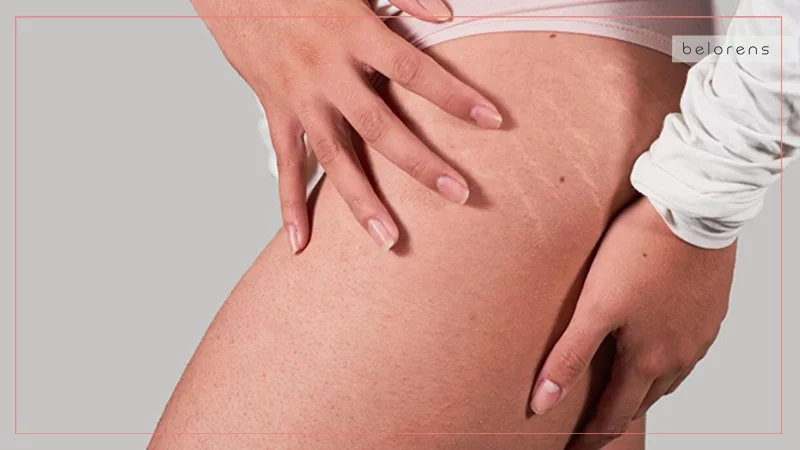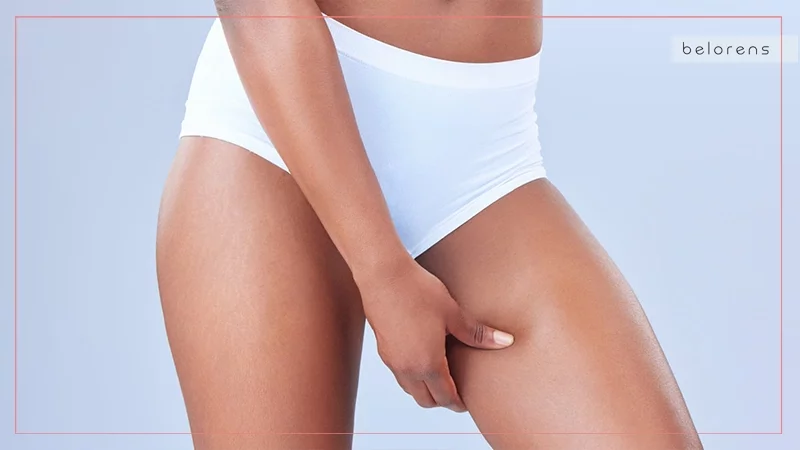Published on 18 Aug 2024
7 Things You Need to Know about Thigh Liposuction
- ByMedical Content Team
- Medically Reviewed byDr. Sabine Kulhanek
Fact checked

Dreaming of smoother, sculpted thighs but tired of exercises and diets that don’t seem to work? Thigh liposuction might just be the game-changer you need. This procedure has become a popular choice for those looking to get rid of stubborn fat and achieve a more contoured look. But what exactly does it involve? And is it the right choice for you?
In this blog post, we’ll break down the seven key things you need to know about thigh liposuction. Whether you’re curious about the process, the benefits, or the recovery, we've got all the details to help you make an informed decision. Let's uncover the secrets to getting the thighs you’ve always wanted.
The procedure basics
Thigh liposuction or thigh lipo is a surgical technique designed to remove excess fat from the thighs, enhancing the leg's contours and overall appearance. The procedure typically involves making small incisions through which a cannula, a thin tube, is inserted to suction out the fat deposits.
Techniques such as tumescent liposuction (using a saline solution to minimize bleeding and ease fat removal), laser-assisted liposuction (using laser energy to liquefy fat), and ultrasound-assisted liposuction (using ultrasonic waves) are commonly used. The choice of technique depends on the patient's needs and the surgeon's expertise.
The procedure usually lasts between one to three hours, depending on the extent of the area being treated. Anesthesia options range from local anesthesia with sedation to general anesthesia, ensuring patient comfort throughout the surgery. Post-surgery, patients can expect some bruising, swelling, and discomfort, but these typically subside within a few weeks.
Visit our main liposuction page to see all you need to know about the procedure, including B&A photos, providers, discussions, etc.
Ideal candidates
Ideal candidates for thigh liposuction are individuals in good overall health who struggle with localized fat deposits on their thighs that have proven resistant to diet and exercise. Candidates should have firm, elastic skin, as this helps achieve better contouring results post-surgery. It's important for candidates to be close to their ideal body weight, as liposuction is not a weight-loss solution but rather a body contouring procedure.
Non-smokers are preferred, as smoking can impair healing. Realistic expectations are crucial; candidates should understand that while liposuction can significantly improve body contours, it won't necessarily transform one's body entirely. A thorough consultation with a board-certified plastic surgeon will help determine if one is a good candidate, taking into account medical history, current health status, and aesthetic goals. This ensures the best possible outcomes and minimizes the risk of complications.
Not good for stretch marks and cellulite

Thigh liposuction does not remove stretch marks. Stretch marks, also known as striae, are caused by rapid stretching of the skin, which leads to tearing of the dermis. These marks are usually a result of pregnancy, significant weight changes, or rapid growth during puberty. Because they are located in the skin itself, rather than the fat beneath it, liposuction cannot address them. While the removal of fat may slightly improve the appearance of stretch marks by reducing the volume of the area and potentially tightening the skin somewhat, it will not eliminate them. Treatments for stretch marks include topical creams, laser therapy, and microneedling, which can help to reduce their appearance.
Similarly, thigh liposuction is not an effective treatment for cellulite. Cellulite occurs due to the structure of connective tissue bands that tether the skin to the underlying muscles, creating a dimpled or "orange-peel" appearance. While liposuction removes fat, it does not address these fibrous bands or the structural issues causing cellulite. In fact, in some cases, liposuction can make the appearance of cellulite worse if the skin does not retract well after fat removal. Effective treatments for cellulite often include specialized procedures like laser treatments, radiofrequency therapy, or other modalities designed to break down the fibrous bands and smooth the skin, such as Cellfina and Cellulaze.
Preparation and consultation
Proper preparation and a detailed consultation are essential for a successful thigh liposuction procedure. During the consultation, the surgeon will assess the patient's medical history, current health, and specific areas of concern. This is the time to discuss expectations, potential outcomes, and any questions the patient may have.
Pre-surgery preparations often include avoiding certain medications that can increase bleeding, such as aspirin or anti-inflammatory drugs, and quitting smoking to promote better healing. Patients may also be advised to undergo lab tests or a medical evaluation to ensure they are fit for surgery.
Maintaining a stable weight before the procedure is important, as significant weight fluctuations can affect the results. The surgeon will provide detailed pre-operative instructions, including guidelines on eating, drinking, and medications to ensure the patient is well-prepared for the day of surgery.
Recovery process

The recovery process following thigh liposuction involves several stages and requires patience and adherence to post-operative care instructions. Immediately after the procedure, patients can expect swelling, bruising, and discomfort, which can be managed with prescribed pain medications. Wearing compression garments is crucial during the initial weeks to help reduce swelling, support the new contours, and aid in the skin's adaptation to the new shape.
Most patients can resume light activities within a few days, but strenuous activities and heavy lifting should be avoided for at least four to six weeks. Follow-up appointments with the surgeon are necessary to monitor the healing process and address any concerns. Full recovery and the final results typically become visible after several months as the swelling completely subsides and the skin settles into its new contour.
Also Read: 5 Tips to Maintain Liposuction Results for Long
Potential risks and complications
While thigh liposuction is generally safe, it does carry potential risks and complications, as with any surgical procedure. Common risks include infection, bleeding, and adverse reactions to anesthesia. Patients may also experience contour irregularities, such as lumps and bumps or uneven skin texture, if fat removal is not uniform. Temporary side effects like swelling, bruising, and numbness are normal, but persistent numbness or changes in skin sensation can occur. Rare but serious complications include deep vein thrombosis, fat embolism, and damage to underlying structures such as nerves or muscles.
Choosing a board-certified plastic surgeon with extensive experience in liposuction significantly reduces these risks. Following pre- and post-operative instructions meticulously also plays a crucial role in minimizing complications and promoting a smooth recovery.
Results and maintenance

The results of thigh liposuction can be quite transformative, offering a more streamlined and toned appearance of the thighs. Initial results can be seen once the swelling begins to subside, but the final contour typically takes several months to fully develop. Maintaining the results requires a commitment to a healthy lifestyle, including regular exercise and a balanced post-lipo diet, to prevent new fat deposits from forming.
It's important to note that while liposuction permanently removes fat cells, it does not prevent weight gain in remaining fat cells. Patients should aim to maintain a stable weight post-surgery to preserve the enhanced contours. Regular follow-up appointments with the surgeon can help monitor the results and address any concerns. Overall, thigh liposuction can provide long-lasting improvements in body shape, boosting confidence and body image when maintained with healthy lifestyle habits.




